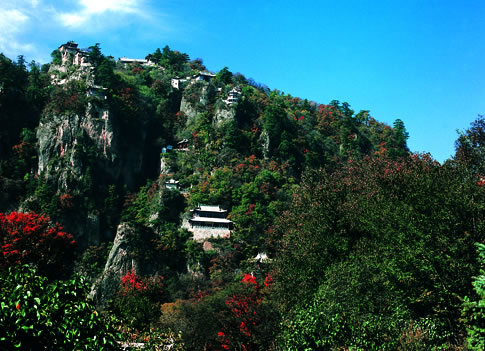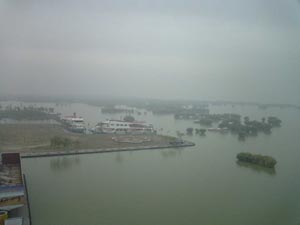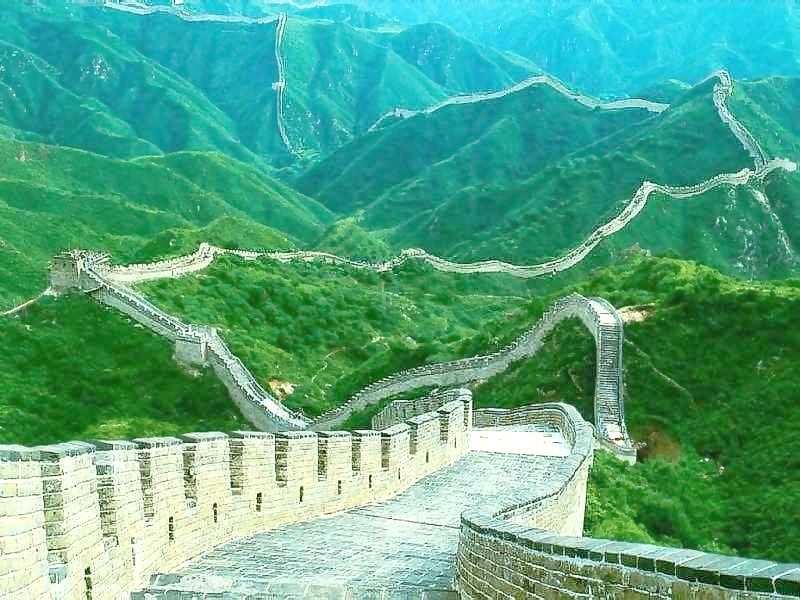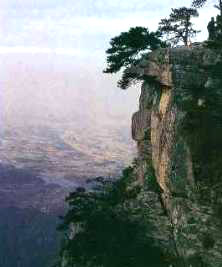Places to Visit in Ningxia
Yinchuan City (also called 'Phoenix City') is the capital of the region situated in the remote northwest of China. The 1000-year-old city is a famous cultural city beyond the Great Wall . The old sector of Yinchuan City to the west is green and peaceful, and contains all the places of interest. It includes the 1500-year-old Haibao Pagoda ; the famous Buddhist architecture from the West Xia Kingdom Chengtiansi Pagoda ; and the West Xia Imperial Tombs known as the 'Pyramids of China'. One can also find there the mystic Helan Mountain Cliff Painting, created by the ancient nomads who dwelled in the regions of the Helan Mountains in northwest Ningxia. They used a bold and descriptive chiseling and drawing technique, to which they added dazzling colors, to depict the history of a splendid Chinese civilization.
Xia Imperial Tombs known as the 'Pyramids of China'. One can also find there the mystic Helan Mountain Cliff Painting, created by the ancient nomads who dwelled in the regions of the Helan Mountains in northwest Ningxia. They used a bold and descriptive chiseling and drawing technique, to which they added dazzling colors, to depict the history of a splendid Chinese civilization.
Liupan Mountain is located in south Ningxia. This is an area famous for its picturesque scenery and it certainly lives up to its reputation as the 'green islet'.
 Sand Lake Scenic Resort is the national tourist trump card for those looking for a place with a lake, sand dunes, reeds, birds and fish. During the May-September period, the lake becomes a veritable paradise for a dozen or so varieties of precious bird species, such as swans, white and grey cranes, black storks, and wild geese.
Sand Lake Scenic Resort is the national tourist trump card for those looking for a place with a lake, sand dunes, reeds, birds and fish. During the May-September period, the lake becomes a veritable paradise for a dozen or so varieties of precious bird species, such as swans, white and grey cranes, black storks, and wild geese.
Shapotou on the southern rim of the Tengger Desert: There one will find the Desert Research Centre, established in 1956 to find ways of preventing the sands from encroaching onto the railways, and one of China's four singing sand dunes. Sliding down the sand dune gives one the feeling of descending from the sky. The peculiar geological structure of the place causes the sand to emit a resonance that reverberates like the tolling of a huge bell or the beating of a big drum. Limpid water flows gently in a knee-deep stream at the foot of the dune.
The Great Wall is one of the world's wonders. The Great Wall in Ningxia was initially built in Qin Dynasty (306 -  251 B.C.), a total about 200 kilometers. The part of the Great Wall in the Northeast of Yinchuan (built in Ming, 1522 A.C.) has been the favorite of many geological scientists. There were two shifts in this 3.5 km long Great Wall. One part moved 1.54 meters clockwise, and the other shifted 0.95 meters vertically. Scientists guessed that the movements were due to an earthquake in 1739, but they could not explain why the other ancient buildings near the Great Wall were not destroyed.
251 B.C.), a total about 200 kilometers. The part of the Great Wall in the Northeast of Yinchuan (built in Ming, 1522 A.C.) has been the favorite of many geological scientists. There were two shifts in this 3.5 km long Great Wall. One part moved 1.54 meters clockwise, and the other shifted 0.95 meters vertically. Scientists guessed that the movements were due to an earthquake in 1739, but they could not explain why the other ancient buildings near the Great Wall were not destroyed.
Ningxia City Center
Yanshui Pavilion: It locates at the offshore of Gantang Lake. Yanshui Pavilion Contains Ningxia’s museum and has a number of interesting pictures from Ningxia’s days as a treaty port.
Gantang Park: The main gate is on Lushan Road; it contains a funfair and a zoo plus some scenic spots looking out across the lake. 
Nengren Temple: It is a small temple on Yu Liang Nan Road.
Dong Lin Temple: To the South of Ningxia on the route to the foot of Lushan. The temple was the abode of the founder of the Pure Land Sect of Buddhism. The Hall of a Thousand Buddhist Saints is worth a visit. If you go near lunchtime, your ticket price includes lunch with the monks (men) and nuns (women). You can catch a small mini bus from Shili to the base of the road to the temple and then walk along a very pleasant country road for about 15 minutes to get to the temple. You can also take a taxi for about 30 Yuan.
Po Yang Lake: It is the largest fresh water lake in China; it is home to a vast array of migratory birds in winter. During winter it is considered to be one of the world sites amongst ornithologists. Independent transportation is needed to get to the bird sanctuary and back in a day.

Lushan Mountain : In 1996, UNESCO has labeled this mountain range a World Cultural Heritage Site but it has been featured in poetry and art since the Tang Dynasty. You can either hike up from Hao Han Po [3 to 5 hours] or take a bus [about an hour] or a taxi [about 45 minutes]. Entrance tickets to the area vary in price according to the season but are generally around 135 RMB. The full time international students can get an annual pass for about 25 RMB at the beginning of the academic year.